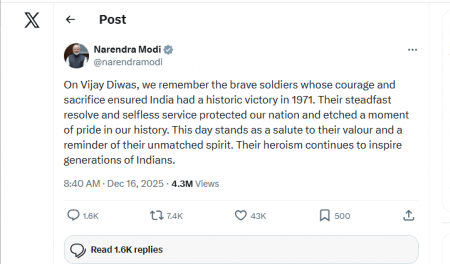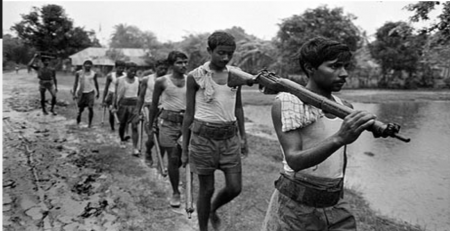Plagiarism
Paper and Books
The word ’Paper’ is derived from the word ’Papyrus,’ which was a plant found in Egypt along the lower Nile River. About 5,000 years ago, Egyptians created ’Sheets’ of papyrus by harvesting, peeling and slicing the plant into strips. The strips were then layered, pounded together and smoothed to make a flat, uniform sheet.
The immediate predecessor to modern paper is believed to have originated in China in approximately the 2nd century AD, although there is some evidence for it being used before this date. Papermaking is considered to be one of the Four Great Inventions of Ancient China, since the first pulp papermaking process was developed in China during the early 2nd century AD by the Han court eunuch Cai Lun. China used paper as an effective and cheap alternative to silk, letting them sell more silk, leading to a Golden Age. The use of paper spread from China through the Islamic world, where the first paper mills were built, and entered production in Europe in the early 12th century. Mechanized production of paper in the early 19th century caused significant cultural changes worldwide, allowing for relatively cheap exchange of information in the form of letters, newspapers and books for the first time. In 1844, both Canadian inventor Charles Fenerty and German inventor F.G. Keller had invented the machine and process for pulping wood for the use in paper making. This would end the nearly 2000-year use of pulped rags and start a new era for the production of newsprint and eventually all paper out of pulped wood.
Evidence suggests that ceramic movable type was invented in China by Bi Sheng around 1050 CE. Unfortunately, no surviving printed books from this period have been found. It's fairly clear that if the Chinese invented movable type, however, they were probably using it to print. This means that the oldest printed book is likely a Buddhist religious text from the 11th century, even if researchers don't know which one. Sheng's type did not hold up well, according to contemporaries, and the concept was abandoned, with the Chinese returning to wood block printing.
Photography, Painting and Movie
The first photograph was taken in 1814 by Nicéphore Niépce using a sliding wooden box camera made by Charles and Vincent Chevalier in Paris; the photograph though was not permanent and it faded.
The first known permanent color photograph is taken by Scottish inventor James Clerk Maxwell in 1861. The first modern ("integrated tri-pack") color film, Kodachrome, was introduced by the Eastman Kodak Company in 1935, using three colored emulsions. Most modern color films, except Kodachrome, are based on technology developed for Agfacolor (as "Agfacolor-Neu") in 1936. (In this newer technology, chromogenic dye couplers are already within the emulsion layers, rather than having to be carefully diffused in during development.) Instant color film was introduced by Polaroid in 1963.
Without a doubt, most movie buffs will know that the first 'talkie' was Al Jolson's "The Jazz Singer". However, the first color movie is a little more obscure. The most well-known movies to use color were "The Wizard of Oz" and "Gone With the Wind", both from 1939.
However, pre-dating those classics by more than 20 years was a 1918 silent film called "Cupid Angling". This is the accepted 'first' color feature-length film, and is also the oldest listed on IMDB as color. IMDB also has heaps of color shorts which predate even this, the earliest listed is from 1902. The actual first filming process was called Kinemacolor, and was invented in 1908 by a Brit named Charles Urban. The more well-known Technicolor corporation was founded in 1918. Prior to 1908, the 'color' movies produced were with hand-tinted frames painted by color artists.
Cave paintings are paintings on cave walls and ceilings, and the term is used especially for those dating to prehistoric times. The earliest known European cave paintings date to Aurignacian, some 32,000 years ago.
Leonardo began painting the Mona Lisa in 1503, during the Italian Renaissance and, according to Vasari, "after he had lingered over it four years, left it unfinished. He is thought to have continued to work on it for three years after he moved to France and to have finished it shortly before he died in 1519. Leonardo took the painting from Italy to France in 1516 when King François I invited the painter to work at the Clos Lucé near the king's castle in Amboise. Most likely through the heirs of Leonardo's assistant Salai, the king bought the painting for 4,000 écus and kept it at Château Fontainebleau, where it remained until given to Louis XIV. Louis XIV moved the painting to the Palace of Versailles. After the French Revolution, it was moved to the Louvre. Napoleon I had it moved to his bedroom in the Tuileries Palace; later it was returned to the Louvre. During the Franco-Prussian War (1870–1871) it was moved from the Louvre to a hiding place elsewhere in France.
Mona Lisa was not well known until the mid-19th century when artists of the emerging Symbolist movement began to appreciate it, and associated it with their ideas about feminine mystique. Critic Walter Pater, in his 1867 essay on Leonardo, expressed this view by describing the figure in the painting as a kind of mythic embodiment of eternal femininity, who is "older than the rocks among which she sits" and who "has been dead many times and learned the secrets of the grave."
From a historical perspective however, is generally accepted that the first Modern Art painting came from the brush of Pablo Picasso, that being his 1907 masterpiece, Les Demoiselles d'Avignon.
Extract
প্রায় ৫০০০ বছর আগে মিশরীয়গণ ‘প্যাপিরাস’ গাছ থেকে মসৃণ ও সমতল পৃষ্ঠ বিশিষ্ট বস্তু আবিষ্কার করেন, যার উপর লেখাজোকা করা যেতো। দ্বিতীয় শতকের গোড়ার দিকে চীনে কাগজ প্রস্তুতপ্রণালী শুরু হয়; এবং চীন থেকেই মুসলমানদের দ্বারা কাগজের ব্যবহার ছড়িয়ে পড়ে; ইউরোপে কাগজ প্রস্তুত শুরু হয় দ্বাদশ শতকের শুরুতে। ১৮৪৪ সালে কানাডা ও জার্মানে যুগপৎভাবে কাগজের মেশিন আবিষ্কৃত হবার ফলে ব্যাপক হারে কাগজ প্রস্তুত হতে থাকে এবং গোটা বিশ্বে একটা সাংস্কৃতিক পরিবর্তন সাধিত হয়।
১৮১৪ সালে প্রথম ক্যামেরাবন্দি সাদাকালো ছবি তোলা হয়; পৃথিবীর প্রথম রঙিন ছবি তোলা হয়েছিল ১৮৬১ সালে। ১৯০২ সালের আগে কোনো রঙিন চলচ্চিত্র ছিল না।
৩২০০০ বছর আগেও মানুষ গুহার দেয়ালে চিত্রাঙ্কন করতো।
লিওনার্দো দা ভিঞ্চি ১৫০৩ সালে মোনালিসা আঁকতে শুরু করেন, এবং ১৫১৯ সালে মৃত্যুর কিছুদিন আগে তাঁর মোনালিসা-অঙ্কন শেষ হয় বলে ধারণা করা হয়। প্রথম সর্বাধুনিক শিল্পকর্মটি পাবলো পিকাশের বুরুশ থেকেই সৃষ্টি হয় ১৯০৭ সালে।
কাগজ, আর্টওয়ার্ক আর ক্যামেরা আবিষ্কৃত হবার আগে ভূমিষ্ঠ হওয়া সৌন্দর্যদেবীগণ কেবল লেখকের বর্ণনার গুণেই শ্রেষ্ঠত্ব পেয়েছেন।
আমরা যাঁদেরকে সাম্প্রতিককালে সামনাসামনি বা চলচ্চিত্রে কিংবা স্থিরচিত্রে দেখেছি, অথবা সৌন্দর্যের বর্ণনা পড়ে প্রেমে পড়েছি- এঁদের চেয়ে এনসাইক্লোপিডিয়ার কিওপেট্রা আর মোনালিসাগণ অধিক সুন্দরী ও আবেদনময়ী ছিলেন- তা অপ্রমাণিত।
ঐশ্বরিয়া রাই অথবা লিজ টেলরের প্রগাঢ় চোখের দিকে দৃষ্টি নিক্ষেপ করুন। অড্রে হেপবার্নের হাড়বেরুনো ঘাড়ের দিকে তাকান। আর এই যে কিছুক্ষণ আগে বাঙালি মেয়ে প্রভার একজোড়া ধ্যানমগ্ন চোখ ও অবয়ব দেখলেন- অদেখা কোনো দেবীই এর চেয়ে অধিক মাদকতাময়ী নয়।
মোনালিসার সৌন্দর্যের শাশ্বত্ব এখন শুধু কবিতায়ই পাবেন, তেমনি বনলতা সেনের কথাও বলা যায়। সুচিত্রা সেনের কতোটুকু শিল্পই বা ভিঞ্চির আর্টিফিশিয়াল মোনালিসায় খুঁজে পাবেন? নার্গিস, এই কিছুদিন আগেও যাঁকে বলা হতো এ উপমহাদেশের সুন্দরীতমা নায়িকা, ঐশ্বরিয়া রাইয়ের ঔজ্জ্বল্যের কাছে প্রিন্সেস ডায়ানা এবং সমগ্র বিশ্ব ক্রমশ বিমর্ষ ও ম্লান হয়ে গেলো।
এই যে কম্পিউটার আর এনিমেশনের যুগ চলে এসেছে, সত্যিকারের সুন্দরীদের অনন্ত মহাকাল অবধি অনায়াসে ধরে রাখা যাবে একচিলতে মেমোরি কার্ড বা ডিভিডি-লেন্সের ভেতর।
কাগজ, আর্টওয়ার্ক আর ক্যামেরা আবিষ্কৃত হবার পর ভূমিষ্ঠ হওয়া সৌন্দর্যদেবীগণই প্রমাণিতভাবে পৃথিবীর সর্বকালের শ্রেষ্ঠ সুন্দরী।

















প্রভার ছবিটি ব্লগার লাল সাগরের সাম্প্রতিক একটা পোস্ট থেকে নেয়া হয়েছে। কৃতজ্ঞতা তাঁর প্রতি।
সর্বশেষ এডিট : ০৭ ই এপ্রিল, ২০১০ রাত ১২:২৯


 অনুগ্রহ করে অপেক্ষা করুন। ছবি আটো ইন্সার্ট হবে।
অনুগ্রহ করে অপেক্ষা করুন। ছবি আটো ইন্সার্ট হবে।








